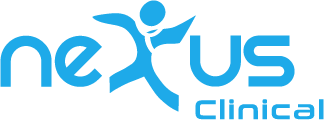
Electronic Health Records (EHR) software is becoming an integral part of healthcare business. There are many good things about EHRs which everyone understands. However, physicians are a big concern for the primary users of EHRs, the physicians. As the software vendors are adding features and modules that help the clinics and physician offices to automate processes, they also end up adding factors that cause discomfort to providers. These discomforting factors in-turn cause burnout to physicians and reduce their productivity. In recent survey over 70 percent physicians reported EHRs causing long work hours and burnouts
There are a lot of factors that cause physician burnout:
1. Unfamiliar terrain – Until 5 years ago a lot of doctors were still using traditional paper documentation methods for most of the patient charting requirements. Use of computers was minimal but now they are required to use computers, which is still unfamiliar terrain to many of them. Learning to use software at this stage is not something that they should be doing at the cost of patient care and other important tasks.
2. Workflow changes due to software – This is an extension to the point above but more related to flexibility of software. Every software has certain workflows, steps built in to achieve tasks. These processes may be unfamiliar to physicians and may require them to change their set processes
3. Software changes for quality reporting and other compliances – Let us face it … many EHRs are keeping up with constantly evolving compliance and quality reporting requirements which gives them little time to optimize the workflows for latest reporting requirements. If any workflows are changed then there is not enough time to train users with changes.
4. Alerts and notifications – Doctors are required to pay attention to every detail in patient healthcare. Alerts and/or notifications generated by the system are meant for helping doctors but they also increase burnout as doctors may feel intimidated if they see a large number of alerts generated by the system with every patient record.
Nexus Clinical team acknowledges the issues that cause physician burnout. We also understand that these issues are inherent due to many factors that are not always in control of any one party. However we keep these all factors in mind while we build our software. We are sure that some of the mechanisms devised to handle complexity are helping physicians and that encourages us to work on more areas where we can simplify the workflows and yet give flexibility to the users of our software.
A few key points we have tried to address –
- Familiarity with the software with the paper charting world – This has resulted in mimicking patient history forms or superbill from paper charting world to electronic environment.
- Avoid frequent screen switching for providers – We have designed a single encounter screen that allows doctors to complete most of their chart documentation from single screen
- Choose the methods you are comfortable with – We have tried to design software in a way that allows users to do things in the way they are comfortable with. This includes
- Providing multiple access paths to key modules.
- Enabling all possible documentation methods for charting – customizable templates, keyboard entry, pull chart sections like HPI or Physical Plan notes from patient history, built in voice to text module, compatibility with Dragon or similar software, integration with traditional transcription service
- Uses existing mechanisms to document quality parameters – Most of the quality reporting in Nexus EHR can be done through the standard workflows or through use of superbill. This reduces additional steps that a provider needs to take for reporting purposes.
- Reduce alert overhead – Doctors can choose the healthcare alerts they wish to use in their operations whether from our library or any custom alerts/notifications. This helps them to control the number of alerts that they need to consider in their day to day operations.
- Listen to customers – One of our key differentiators is that our support is always ready to listen to customers and help them in their slightest of the discomfort. Even if this means that we need to make urgent changes to software and put out patches to help customers we are ready for that. We try to ease their operational issues in the shortest possible time.
We are sure that many healthcare software vendors are working towards reducing physician burnout and that makes us optimistic about having solutions that will help healthcare providers without putting them through additional stress than they already handle.






